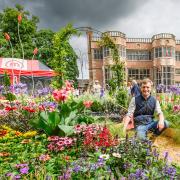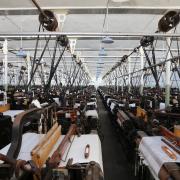Nothing will quite prepare you for the emotional journey of exploring Bickershaw Country Park for the very first time. Located between Bickershaw village and Westleigh on the site of Bickershaw Colliery, the epic scale of the park is completely at odds with an almost innocuous entrance to the car park at Edna Road.
The long history of Bickershaw Colliery is filled with tragedy and intrigue. Nineteen people drowned in an incident in 1932, six people were killed in an explosion a decade later. In 1959, five men died from carbon monoxide poisoning following an explosion in an abandoned part of the mine.
In 1972, the legendary Bickershaw Festival took place at the site in horrendously wet conditions. Rock luminaries playing at the three-day event included The Grateful Dead, The Kinks, Hawkwind, Captain Beefheart and Donovan. Rare film footage shows a sea of mud caused by rain, flooding and a leaky tank used for a fiery high-dive act in front of the stage. A youthful Jeremy Beadle, one of the festival organisers is also captured on film, talking about the event, which despite attracting enormous crowds, proved to be a financial disaster.

Bickershaw Colliery finally closed in 1992. A combination of visionary and pioneering large-scale reclamation together with natural recolonisation have healed the industrial scars across much of this incredible landscape. Today, Bickershaw Country Park is part of the Flashes of Wigan and Leigh National Nature reserve, recognised for its national importance in protecting huge areas of precious wetland habitats.
Whether you are walking, cycling or on horseback and exploring the many kilometres of both surfaced and unsurfaced paths, a glorious tapestry of extensive grasslands, rolling flower meadows, woodland and scrub is gradually revealed. The spectacular transformation, even over the past five years, is truly stunning, especially in the development of massive wetland habitats. Drainage ditches and culverts have been turned into open streams. Pools, ponds, dams and flood plains have also been created. By holding more water, ‘slow the flow’ meandering wetlands now help with natural flood prevention for the surrounding residential properties.
Reminders of the industrial past are still very evident with dramatic spoil slopes surrounding the larger waterbodies, adding to the dark majesty of the landscape.

Bickershaw Project Officer Matthew Freeman, who spends most of his time working with colleagues and volunteers to manage the site said: ‘Bickershaw Country Park is an amazing place and I just love spending time there. It can be very challenging but the chance to make such a large-scale difference to the landscape makes it all worthwhile. It seems like every day I discover something new and exciting about the site.”
Wildlife highlights include willow tits, kingfishers, herons and jack snipes. Roe deer can be seen in the woodlands and buzzards, kestrels and sparrow hawks can often be observed hunting over the grasslands for small mammals like field voles.
Dogs are always welcome as long as they are kept under control. The large waterbodies are fished by the Leigh District Anglers. The country park is owned by Wigan Council and managed in partnership by Lancashire Wildlife Trust.




























